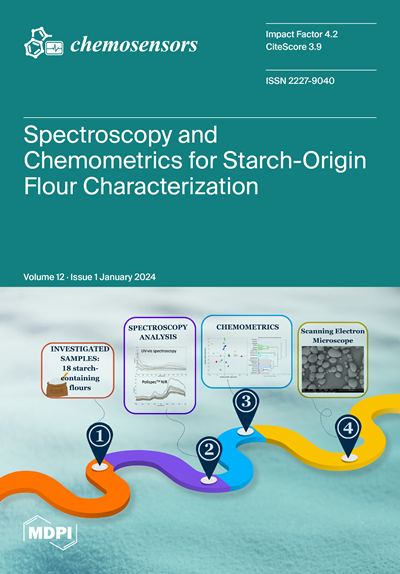横向流动免疫层析法监测食品中黄曲霉毒素的各组分综述及检出限:系统综述
IF 3.7
3区 工程技术
Q2 CHEMISTRY, ANALYTICAL
引用次数: 0
摘要
黄曲霉毒素的检测对于食品工业在食品投放市场前确保其安全和质量至关重要。横向流动免疫层析法(LFIA)是一种简单的技术,可以快速现场检测黄曲霉毒素。本综述的目的是评估和比较2015年至2023年间发表的最新研究文章中报告的检测限。将检测限(lod)与颗粒类型和粒径以及其他变量进行比较,以确定参数之间的趋势和相关性。在2015-2023年间,人们对不同金属和非金属纳米颗粒的使用越来越感兴趣。据报道,所使用的纳米颗粒的直径在1纳米到100纳米之间。这些颗粒的检出限在0.01 ~ 1.0 ng/mL之间。此外,人们对黄曲霉毒素B1的检测非常感兴趣,这可能是由于它的高毒性和在食品中的常见外观。本研究还比较了金属纳米颗粒和非金属纳米颗粒在黄曲霉毒素检测中的应用,以及纳米颗粒大小对检测范围的影响。总的来说,LFIA试纸开发中使用的颗粒类型和粒度会影响灵敏度和LOD;因此,对这些参数的优化及其对某些要求的调制可以在结果的可重复性和商业化方面提高整体分析性能。本文章由计算机程序翻译,如有差异,请以英文原文为准。
Overview of Various Components of Lateral-Flow Immunochromatography Assay for the Monitoring of Aflatoxin and Limit of Detection in Food Products: A Systematic Review
The detection of aflatoxins is essential for the food industry to ensure the safety and quality of food products before their release to the market. The lateral-flow immunochromatography assay (LFIA) is a simple technique that allows the rapid on-site detection of aflatoxins. The purpose of this review is to evaluate and compare the limits of detection reported in the most recent research articles, published between the years of 2015 and 2023. The limits of detection (LODs) were compared against the particle type and particle size, as well as other variables, to identify trends and correlations among the parameters. A growing interest in the use of different metal and non-metal nanoparticles was observed over the years of 2015–2023. The diameters of the nanoparticles used were reportedly between 1 nm and 100 nm. Most of these particles displayed lower LODs in the range of 0.01 to 1.0 ng/mL. Furthermore, there was a significant level of interest in detecting aflatoxin B1, perhaps due to its high level of toxicity and common appearance in food products. This study also compares the use of metallic and non-metallic nanoparticles in detecting aflatoxins and the dependence of nanoparticles’ sizes on the detection range. Overall, the type of particle and particle size used in the development of LFIA strips can affect the sensitivity and LOD; hence, the optimization of these parameters and their modulation with respect to certain requirements can enhance the overall assay performance in terms of the reproducibility of results and commercialization.
求助全文
通过发布文献求助,成功后即可免费获取论文全文。
去求助
来源期刊

Chemosensors
Chemistry-Analytical Chemistry
CiteScore
5.00
自引率
9.50%
发文量
450
审稿时长
11 weeks
期刊介绍:
Chemosensors (ISSN 2227-9040; CODEN: CHEMO9) is an international, scientific, open access journal on the science and technology of chemical sensors published quarterly online by MDPI.The journal is indexed in Scopus, SCIE (Web of Science), CAPlus / SciFinder, Inspec, Engineering Village and other databases.
 求助内容:
求助内容: 应助结果提醒方式:
应助结果提醒方式:


